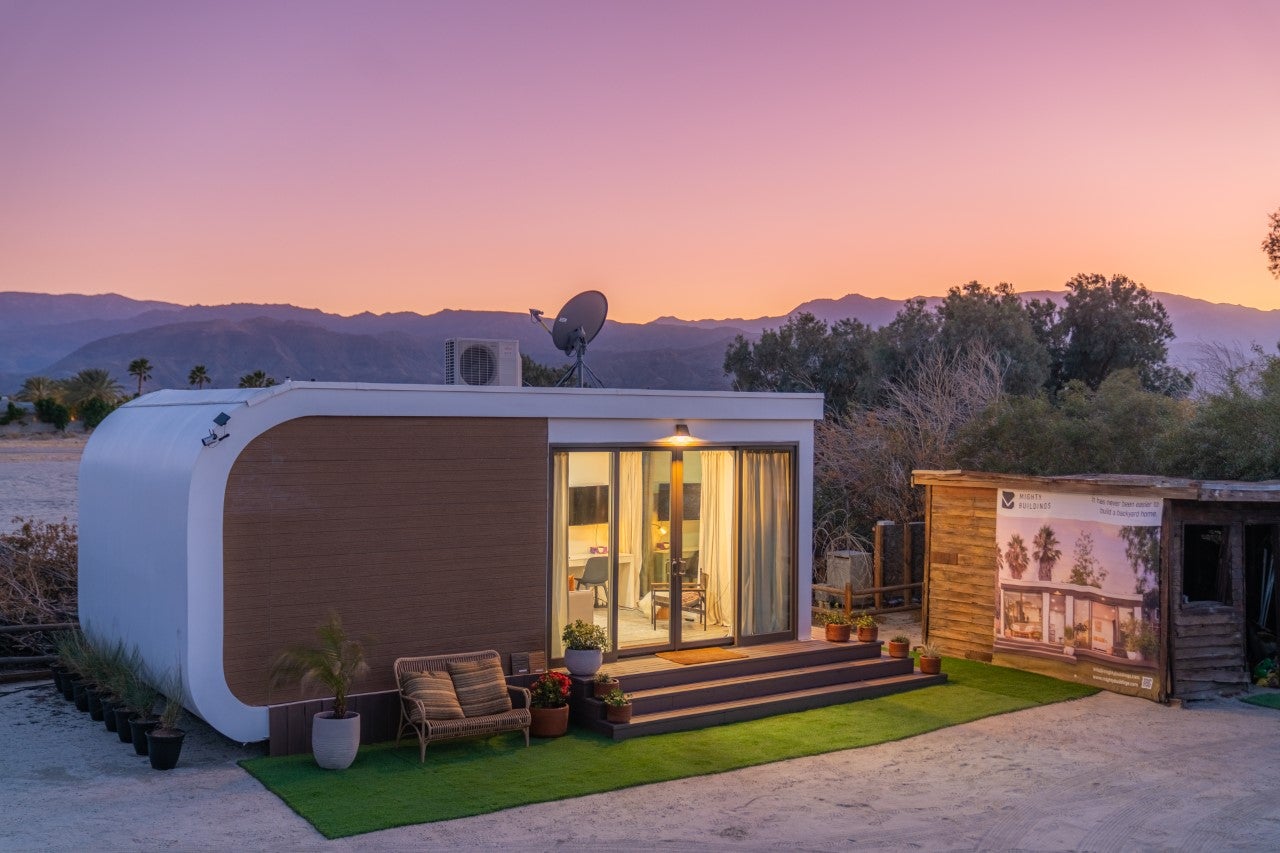First-ever neighborhood of zero-energy 3D-printed homes coming to California with price tag of $595,000
The homes will be located on five acres in the Coachella Valley, close to Palm Springs and Joshua Tree National Park
Your support helps us to tell the story
From reproductive rights to climate change to Big Tech, The Independent is on the ground when the story is developing. Whether it's investigating the financials of Elon Musk's pro-Trump PAC or producing our latest documentary, 'The A Word', which shines a light on the American women fighting for reproductive rights, we know how important it is to parse out the facts from the messaging.
At such a critical moment in US history, we need reporters on the ground. Your donation allows us to keep sending journalists to speak to both sides of the story.
The Independent is trusted by Americans across the entire political spectrum. And unlike many other quality news outlets, we choose not to lock Americans out of our reporting and analysis with paywalls. We believe quality journalism should be available to everyone, paid for by those who can afford it.
Your support makes all the difference.The first-ever 3D-printed, fully sustainable neighborhood is coming to California.
The 15 homes, starting at $595,000, will be located on five acres in Rancho Mirage in the Coachella Valley, close to Palm Springs and Joshua Tree National Park.
The project is a joint effort from real estate group Palari and Mighty Buildings, a sustainable home building service which uses 3D printers to create a pre-fabricated kit of modular panels made of a patented “light stone material”.
Palari says the textured material is the strongest on the market and fire resistant, water resistant and termite-proof.
The method eliminates 99 per cent of construction waste, Palari CEO Basil Starr told The Independent in an email. It also allows a project to be completed in half the time of a traditional build.
Buildings generate nearly 40 per cent of the annual global greenhouse gas emissions driving the climate crisis, and rapid innovation is needed in the sector to reduce its carbon footprint.
Read more:
The Rancho Mirage homes will be powered by solar, the company says, making them zero net energy. However they will be hooked up to the power grid and able to draw on supply if needed (along with having the ability to sell surplus electricity back). There will also be the option to add Tesla Powerwall batteries and electric vehicle chargers.
The 1,450 sq ft properties have three-bedrooms, two-bathrooms, a deck and swimming pool, and start at $595,000. Buyers of these homes can add a 700 sq ft two-bed, one-bath property for $255,000, CNN reports.
Fire pits, hot tubs, cabanas and outdoor showers are among the luxury add-ons, and any interiors that aren’t 3D printed will be sustainably sourced, the companies say.
Zillow reports that the typical home value in Rancho Mirage is $592,295.
The companies will break ground in September on the neighborhood and expect it will be completed by Spring 2022.

Since the project, called Palari Villas, was announced earlier this month, the company has been inundated with thousands of inquiries. Palari Group says that it plans to build net zero energy homes and communities across California.
Zero energy buildings are becoming more common in the US, in a range of climates, as new technology simplifies and speeds up the construction process.
In 2018, Texas-based ICON was the first company in the US to gain a building permit and construct a 3D printed home. The company is now partnering with developer, 3Strands, to sell 3D-printed, two to four bedroom homes in Austin.
In the Netherlands, Eindhoven University of Technology is creating a 3D-printed neighborhood of concrete rented homes, called Project Milestone. The homes will be built on site using a 3D printer with a robotic arm to pour the concrete, reducing waste from materials and transportation costs.
Join our commenting forum
Join thought-provoking conversations, follow other Independent readers and see their replies
Comments